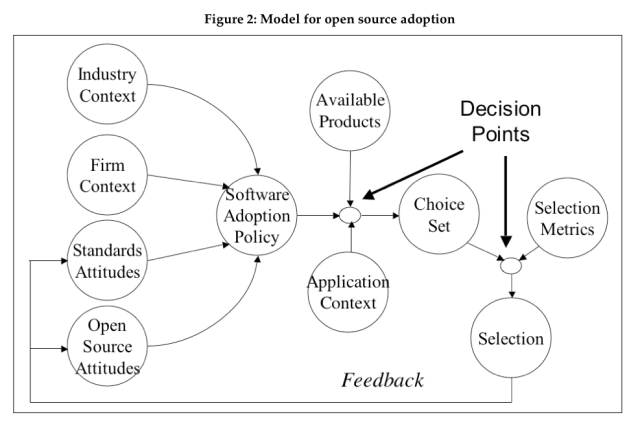Yesterday I attended day 1 of a conference entitled “Public Sector: Open Source” and, while Open Source Software (OSS) was the primary subject, Open Standards were very much on the agenda. I went in particular because of an interest in what the UK Government Cabinet Office is doing in this area.
I have previously been quite positive about both the information principles and the open standards consultation (blog posts here and here respectively). We provided a response to the consultation and were pleased to see the Nov 1st announcement that government bodies must comply with a set of open standards principles.
The speaker from the Cabinet Office was Tariq Rashid (IT Reform group) and we were treated to a quite candid assessment of the challanges faced by government IT, with particular reference to OSS. His assessment of the issues and how to deal with them was cogent and believable, if also a little scary.
Here are a few of the things that caught my attention.
Outsource the Brawn not the Brain
Over a period of many years the supply of well-informed and deeply technical capability in government has been depleted such that too many decisions are made without there being an appropriate “intelligent customer“. To quote Tariq: “we shouldn’t be spending money unless we know what the alternatives are.” The particular point being made was about OSS alternatives – and they have produced an Open Source Procurement Toolkit to challenge myths and to guide people to alternatives – but the same line of argument extends to there being a poor understanding of the sources of technical lock-in (as opposed to commercial lock-in) and how chains of dependency could introduce inertia through decisions that are innocuous from a naive analysis.
By my analysis, the Cabinet Office IT reform team are the exception that proves the general point. It is also a point that universities and colleges should be wary of as their senior management tries to cut out “expensive people we don’t really need”.
The Current Procurement Approach is Pathological
There is something slightly ironic that it takes a Tory government to seriously attack an approach which sees the greatest fraction of the incredible £21 billion p.a. central government spend on IT go to a handful of big IT houses (yes, countable on 2 hands).
In short: the procurement approach, which typically involves a large amount of bundling-up, reduces competition and inhibits SMEs and providers of innovative solutions as well as blocking more agile approaches.
At the intersection between procurement approach and brain-outsourcing is the critical issue that the IT that is usually acquired lacks a long term view of architecture; this becomes reduced to the scope of tendered work and build around the benefits of the supplier.
Emphasis on Procurement
Most of the presentations placed most emphasis on the benefits of OSS in terms of procurement and cost and this was a central theme of Tariq’s talk also. Having spent long enough consorting with OSS-heads I found this to be rather narrow. What, for example, about the opportunities for public sector bodies to engage in acts of co-creation, either to lead or significantly contribute to OSS projects. There are many examples of commercial entities making significant investments in developer salaries while taking a hands-off approach to governance of the open source product (e.g. IBM and the eclipse platform).
For now, it seems, this kind of engagement is one step ahead of what is feasible in central government; there is a need for thinking to move on, to mature, from where it is now. I also suspect that there is plenty of low-hanging fruit – easy cases to make for cost savings in the near term – whereas co-creation is a longer term strategy. Tariq added that it might be only 2-3 years before government was ready to begin making direct contributions to LibreOffice, which is already being trialled in some departments.
Another of the speakers, representing sambruk (one of the partners in OSEPA, the project that organised the conference) seems to be heading towards more of a consortium model that could lead to something akin to the Sakai or Kuali model for Swedish municipality administration.
Conclusion
For all the Cabinet Office has a fairly small budget, its gatekeeper role – it must approve all spending proposals over £5 million and has some good examples of having prompted significant savings (e.g. £12 -> £2 million on a UK Borders procurement) – makes it a force to be reckoned with. Coupled with an attitude (as I perceive it) of wanting to understand the options and best current thinking on topics such as open source and open standards, this makes for a potent force in changing government IT.
The challenge for universities and colleges is to effect the same kind of transformation without an equivalent to the Cabinet Office and in the face of sector fragmentation (and, at best, some fairly loose alliances of sovereign city states).
